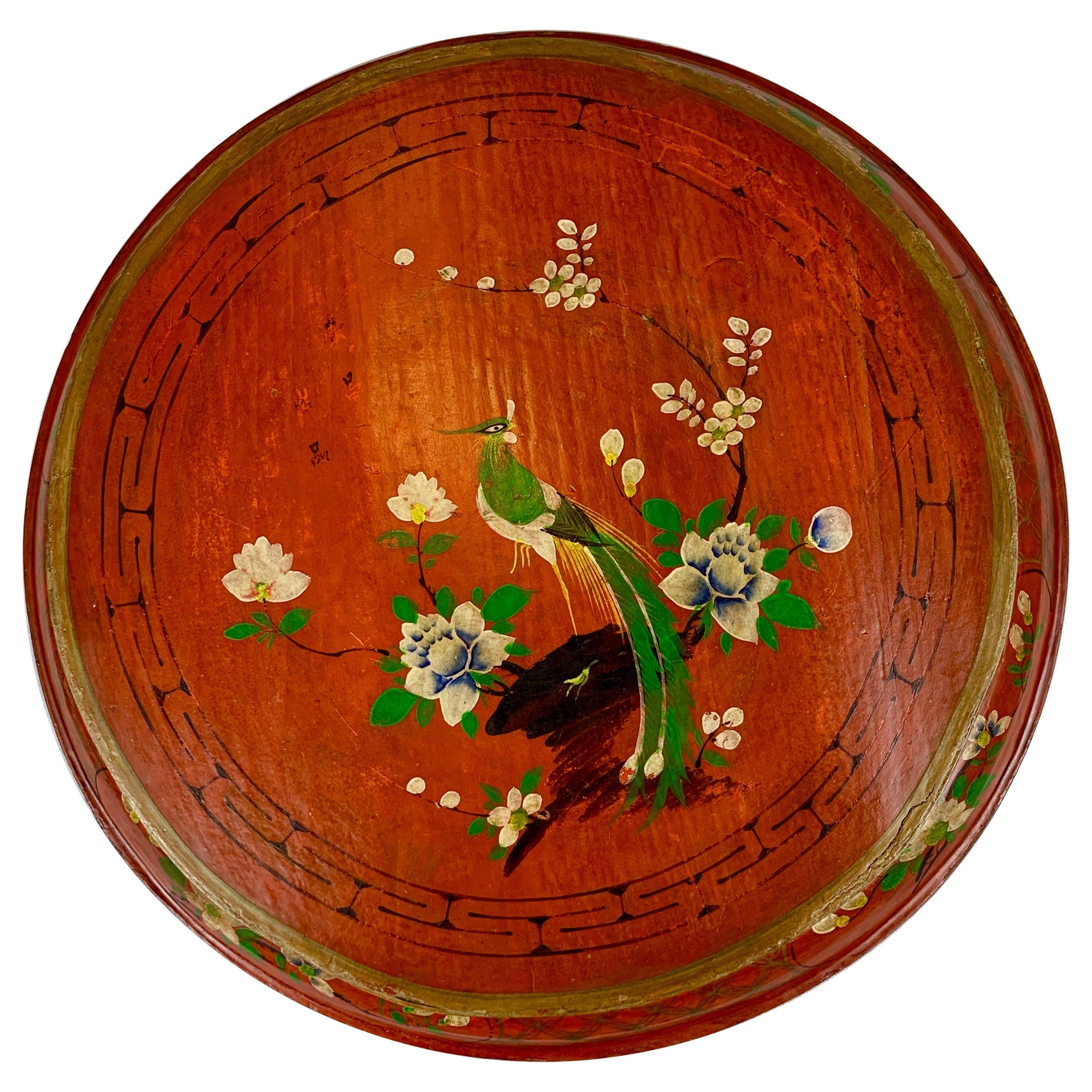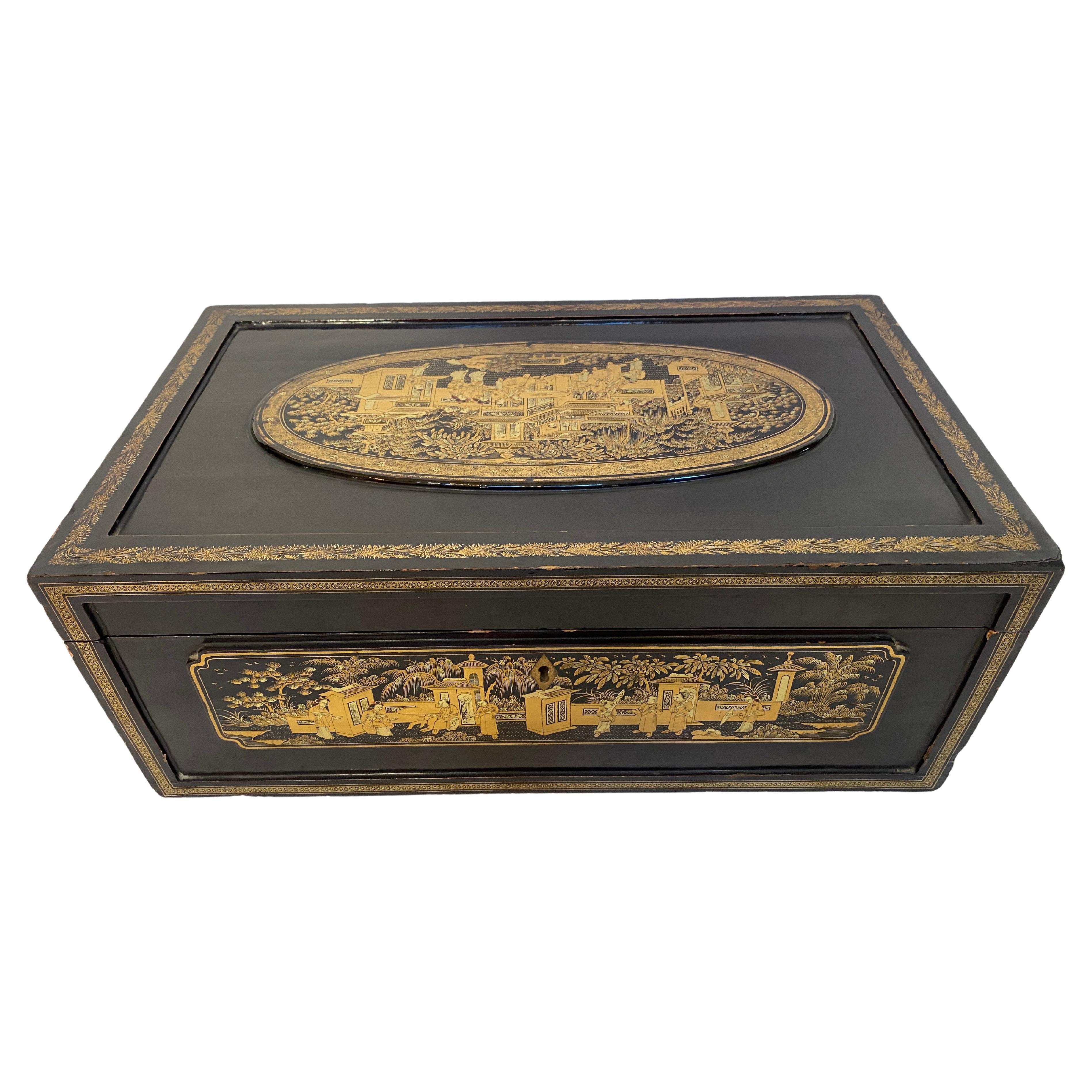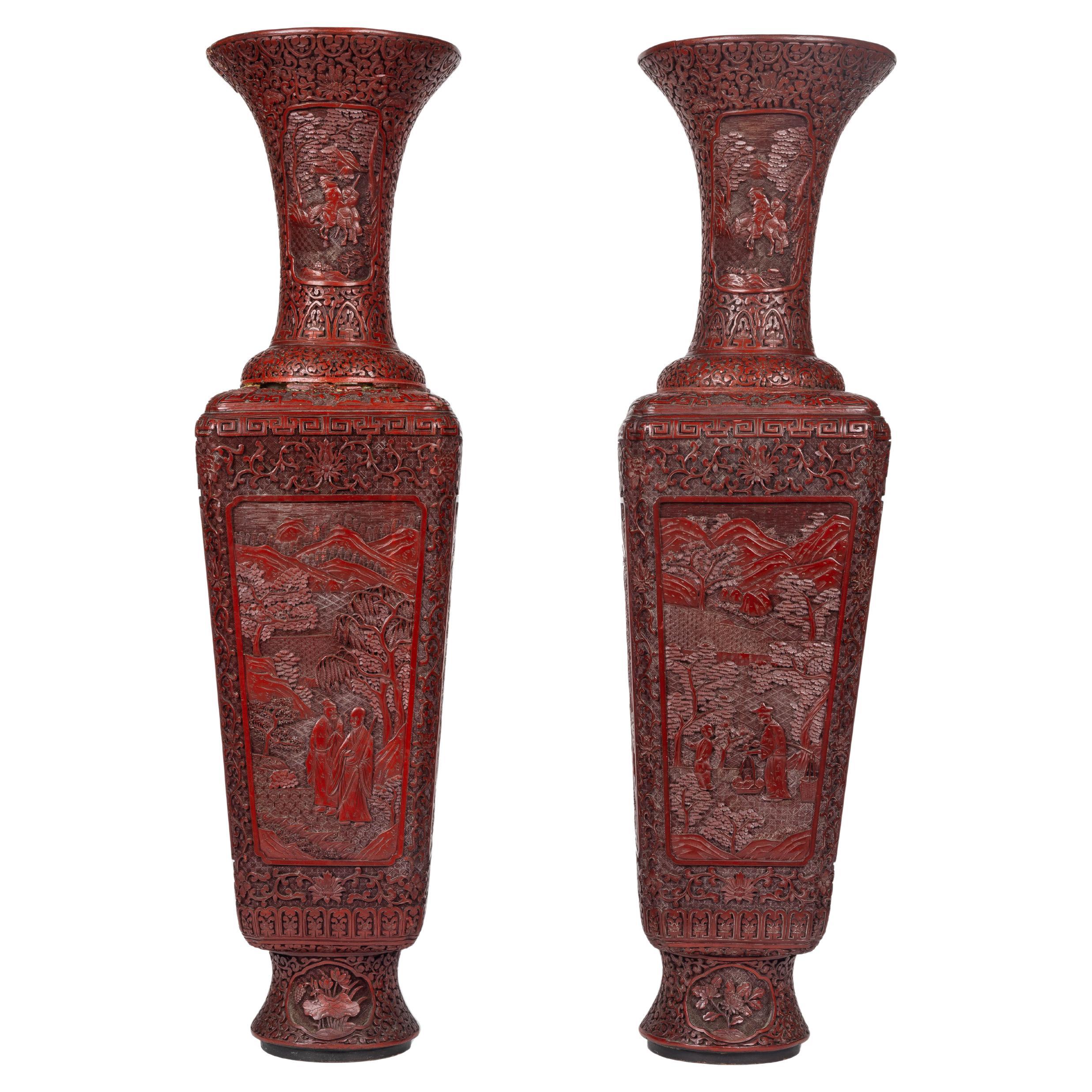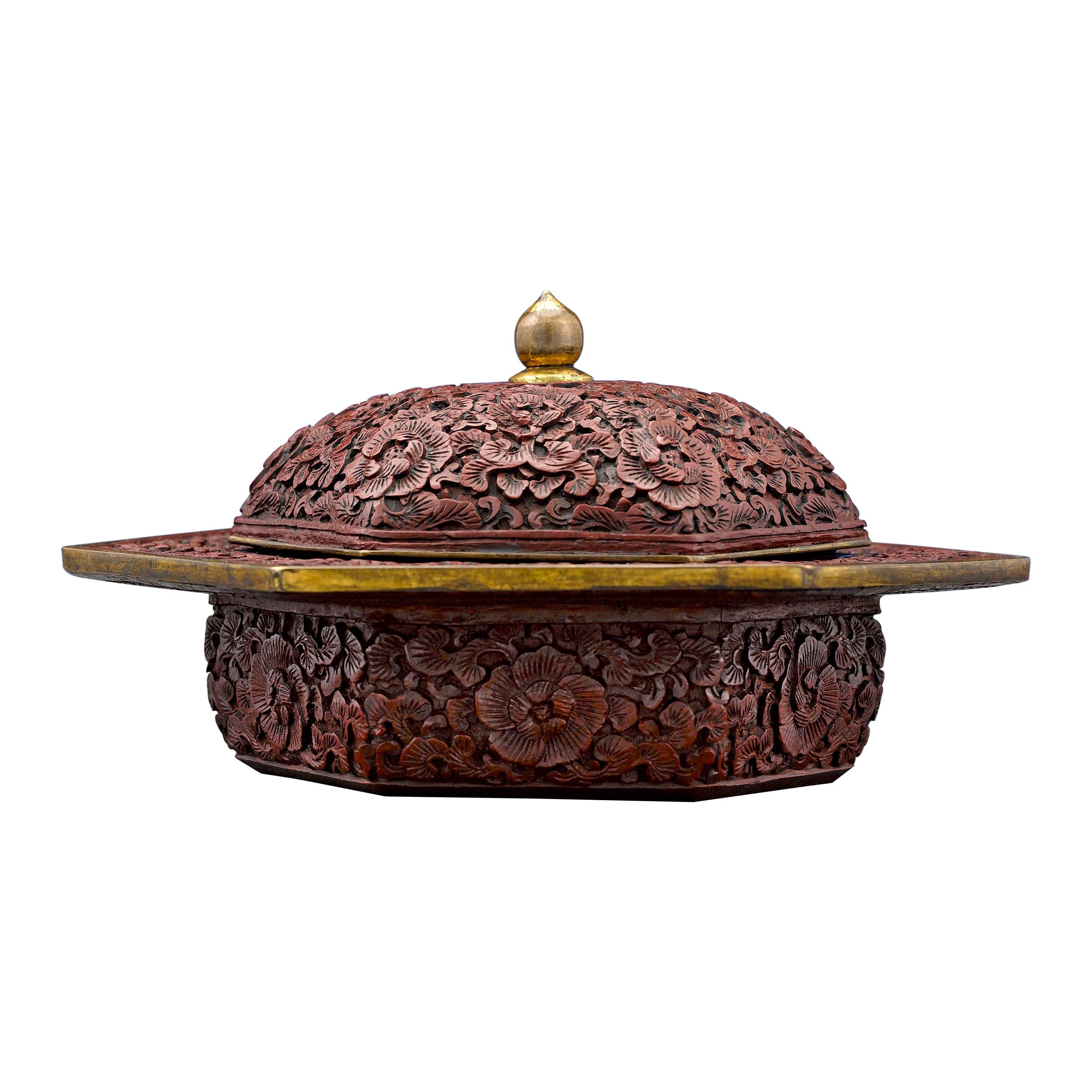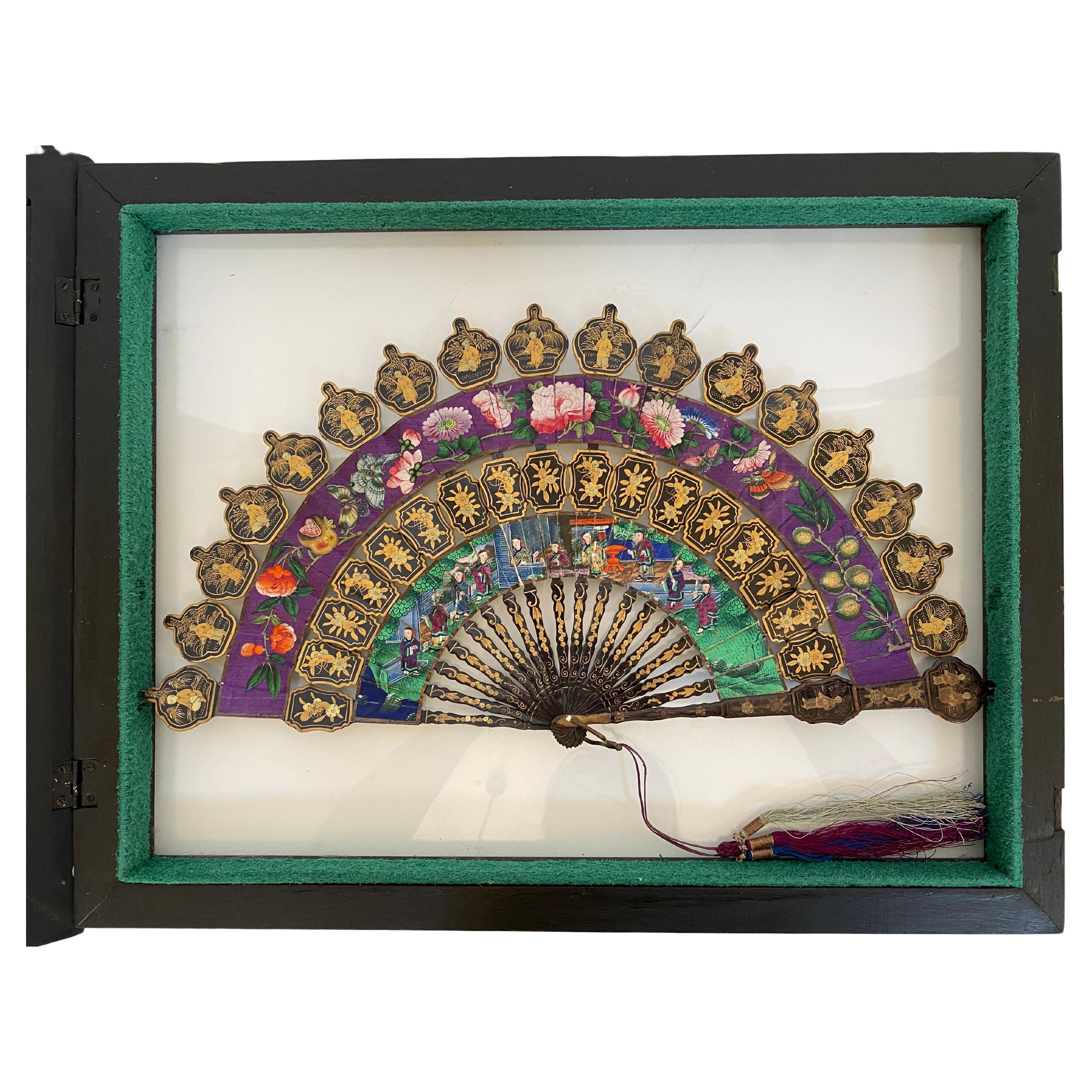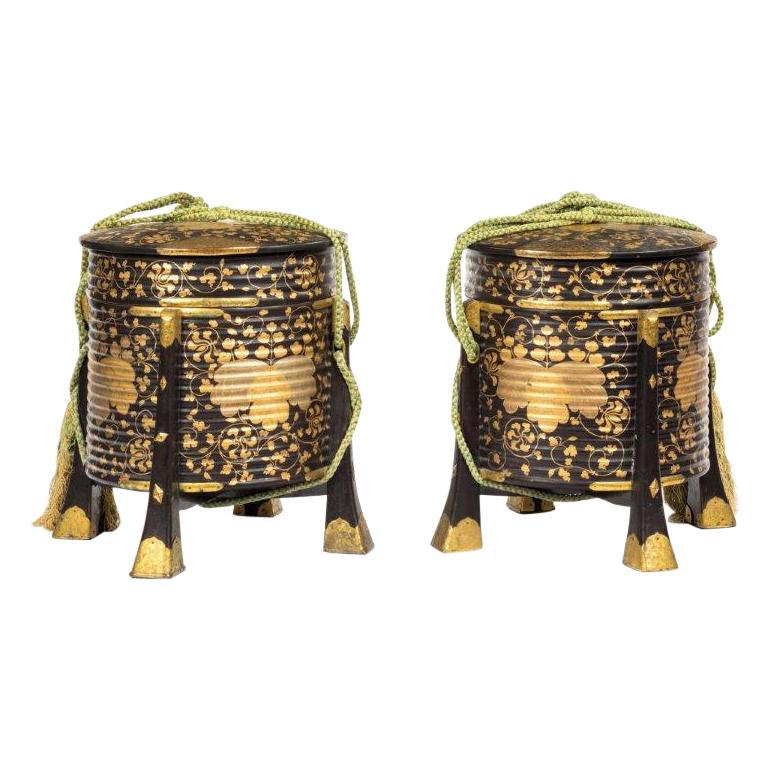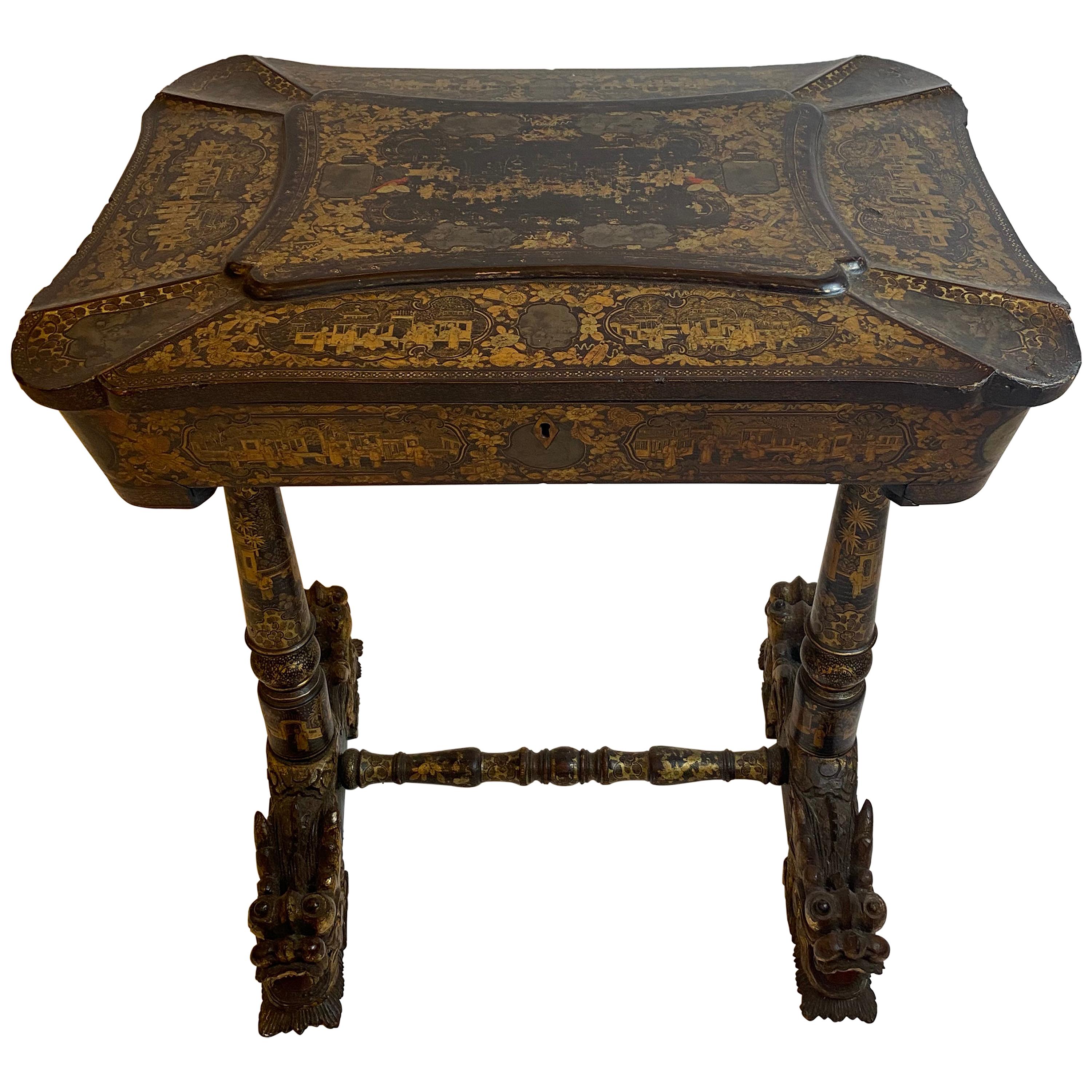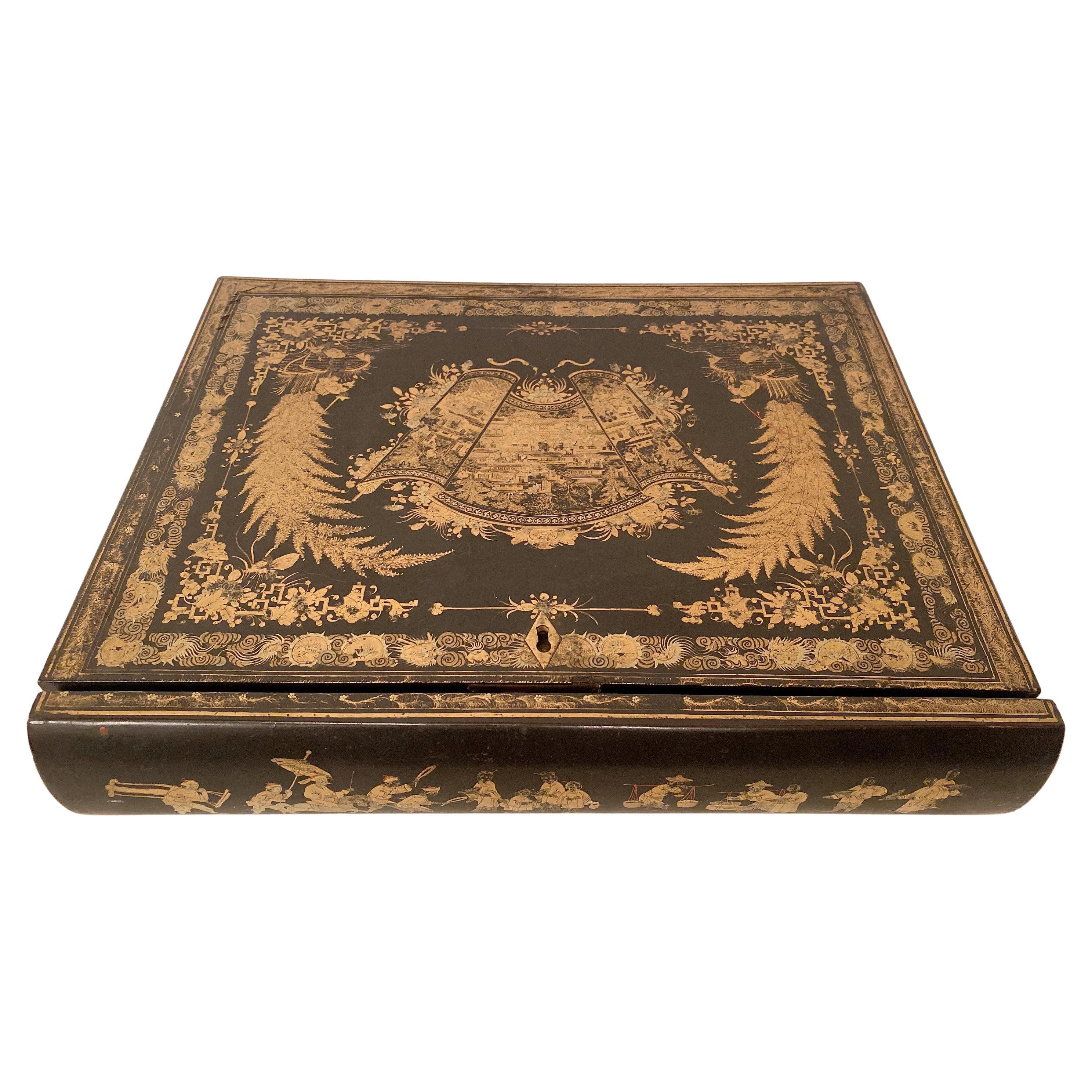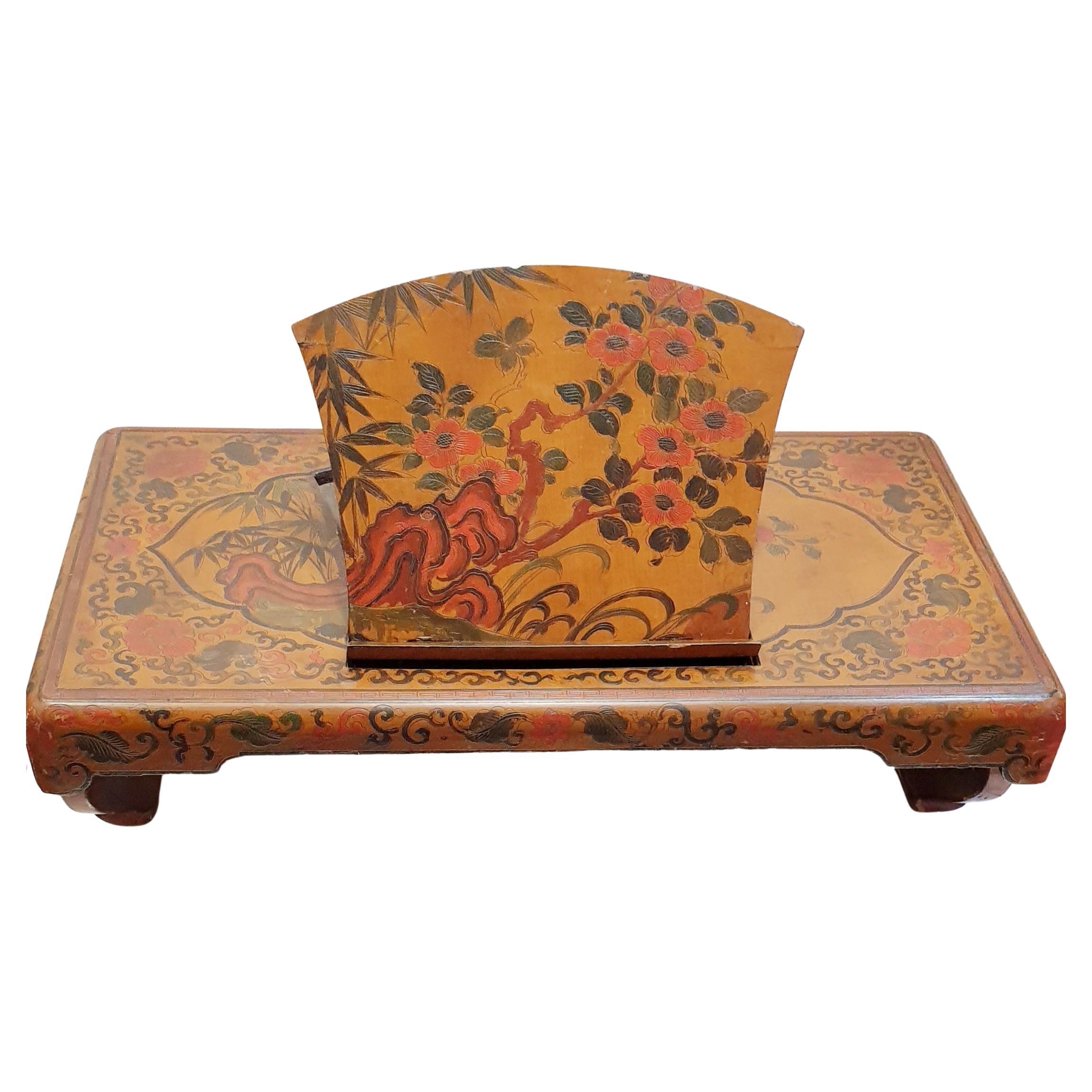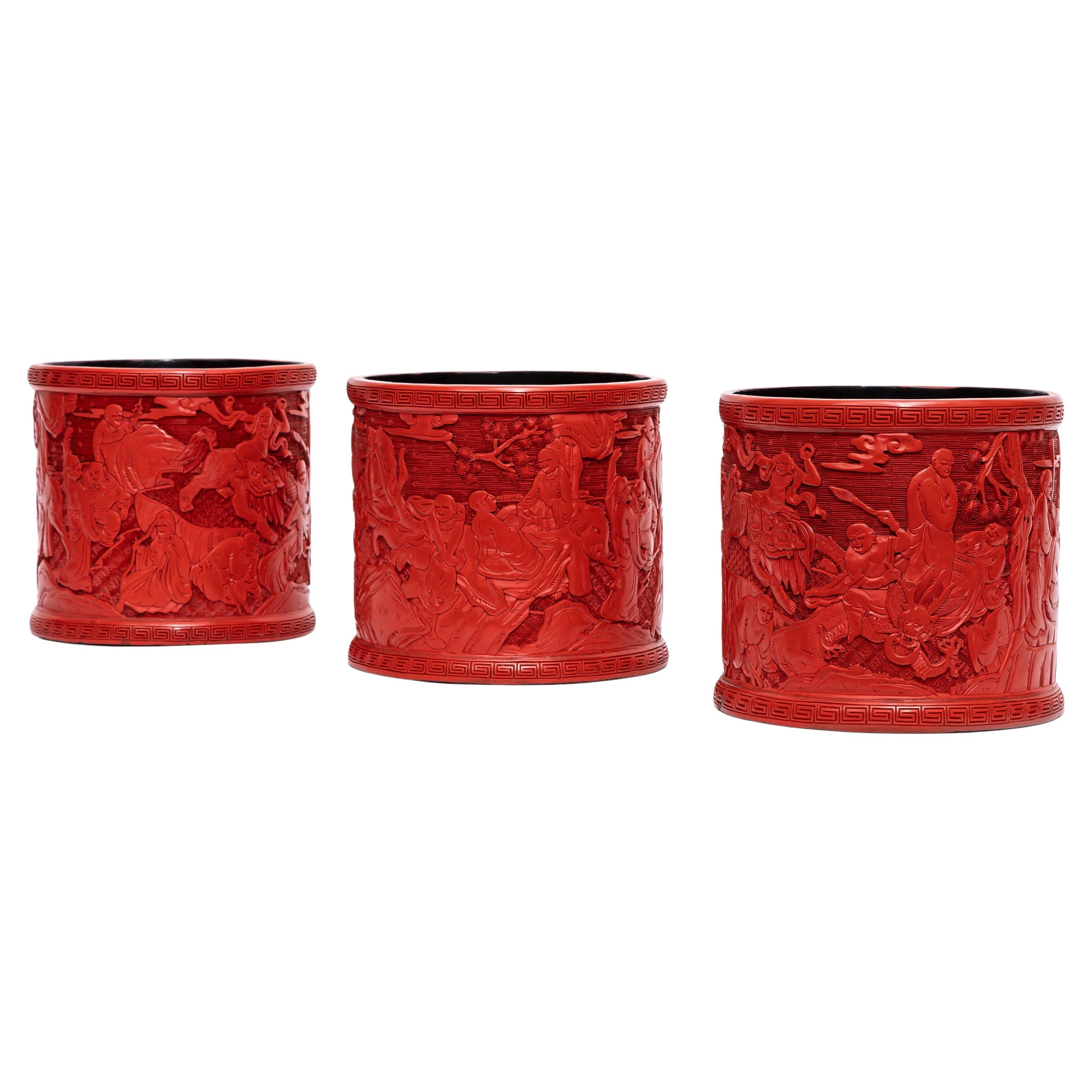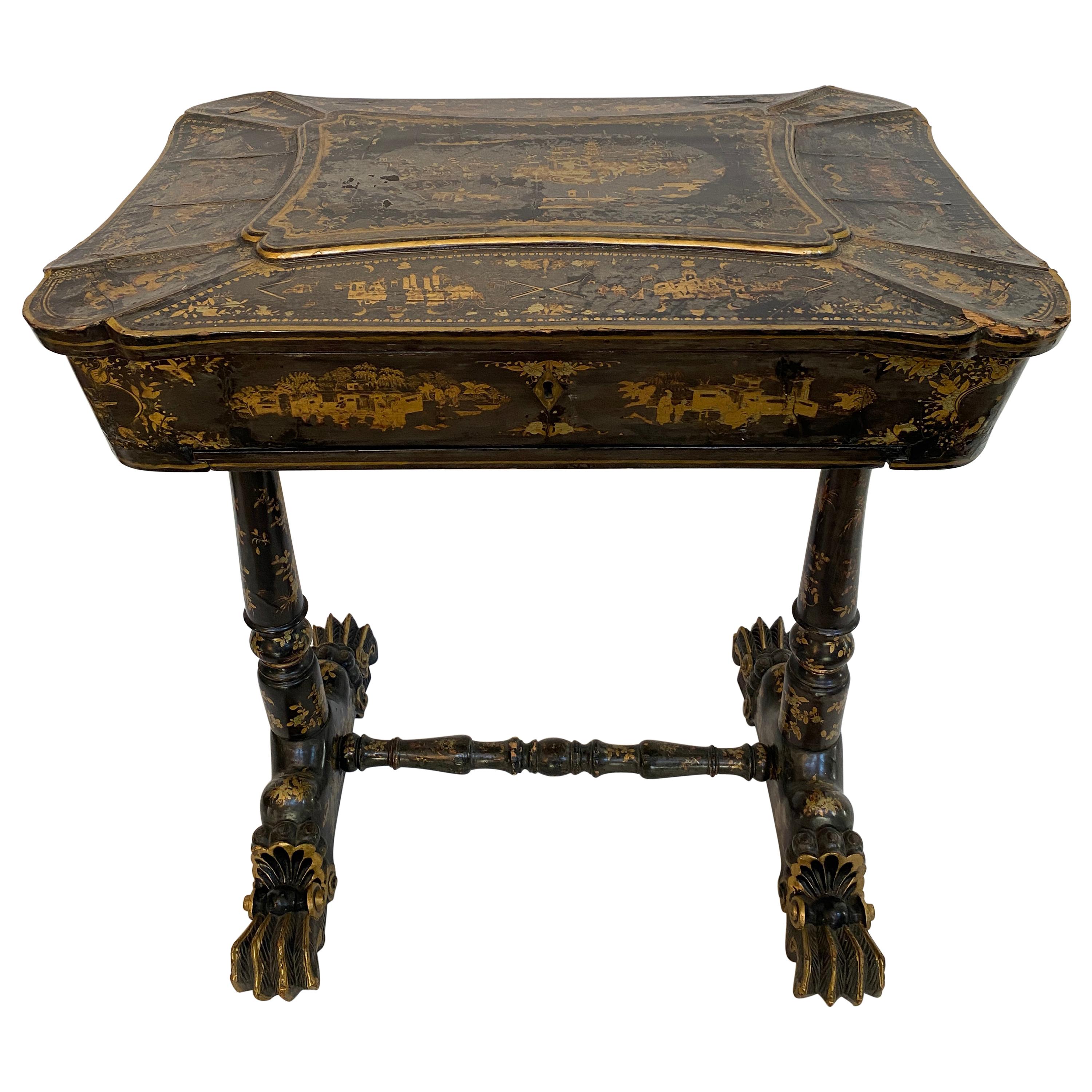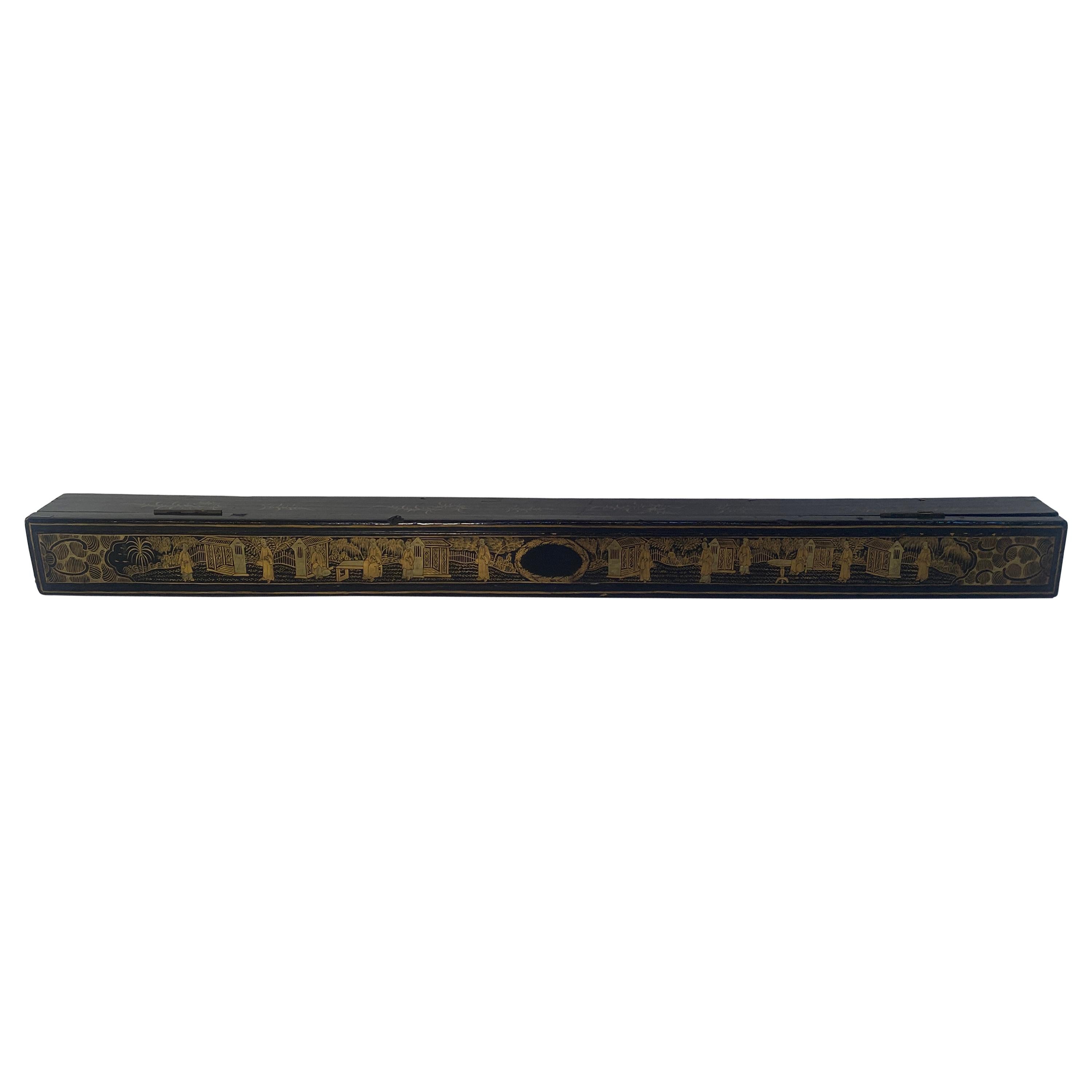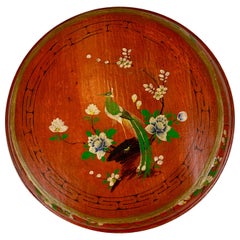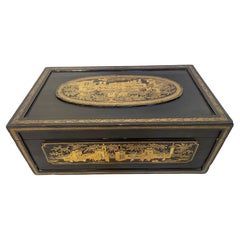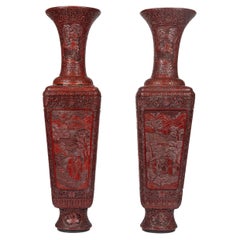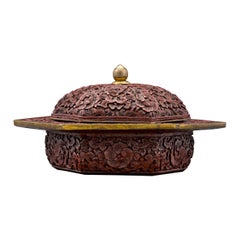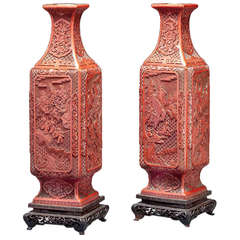
A Pair Of Chinese Cinnabar Lacquer Vases
View Similar Items
1 of 2
A Pair Of Chinese Cinnabar Lacquer Vases
About the Item
- Dimensions:Height: 16.25 in (41.28 cm)
- Sold As:Set of 2
- Materials and Techniques:
- Place of Origin:
- Period:
- Date of Manufacture:Early 19th Century
- Condition:Wear consistent with age and use.
- Seller Location:New York, NY
- Reference Number:Seller: L11671stDibs: LU103321116150
Authenticity Guarantee
In the unlikely event there’s an issue with an item’s authenticity, contact us within 1 year for a full refund. DetailsMoney-Back Guarantee
If your item is not as described, is damaged in transit, or does not arrive, contact us within 7 days for a full refund. Details24-Hour Cancellation
You have a 24-hour grace period in which to reconsider your purchase, with no questions asked.Vetted Professional Sellers
Our world-class sellers must adhere to strict standards for service and quality, maintaining the integrity of our listings.Price-Match Guarantee
If you find that a seller listed the same item for a lower price elsewhere, we’ll match it.Trusted Global Delivery
Our best-in-class carrier network provides specialized shipping options worldwide, including custom delivery.You May Also Like
Red Lacquer Chinese Wedding Box- Hand Decorated
Located in West Palm Beach, FL
Chinese red lacquer two part wedding box. Entirely hand decorated with a bird and flowers on top and flowers and vines along the side. The interior is pai...
Category
Antique 1890s Chinese Chinoiserie Lacquer
Materials
Enamel
$680 Sale Price
20% Off
19th Century Chinese Lacquer Writing Box
Located in Brea, CA
A truly beautiful and amazing piece. From the late 19th century of the Qing Dynasty in China, this lacquered writing box is decorated with the desi...
Category
Antique Late 19th Century Chinese Qing Lacquer
Materials
Lacquer
A Monumental and Rare Pair of Chinese Cinnabar Carved Lacquer Vases, Qianlong
Located in New York, NY
Introducing an extraordinary and exceptionally rare pair of Chinese Cinnabar Carved Lacquer Vases from the Qianlong period. These monumental vases stand as magnificent examples of Ch...
Category
Antique 19th Century Chinese Lacquer
Materials
Lacquer
Chinese Cinnabar Lacquer Cuspidor
Located in New Orleans, LA
This intriguing Chinese zhadou is intricately carved of fine cinnabar lacquer. A work of exceptional artistry, this covered bowl is adorned with an intricately carved floral motif on all surfaces, including the cover and the wide rim. Also known as a cuspidor or spittoon, this rare container would have been used by members of the imperial family and scholar- officials at the court. Carved during the Kangxi period (1662-1722), this charming piece exhibits the high detail and charm associated with items from that period, making it a true treasure,
Early 18th century (Kangxi dynasty)
Measures: 6 ¼” wide x 3 ¼” high
Cinnabar has been revered for its color all over the world. It has been found in the royal burial chambers of the Mayas, in the rituals of India, and in the ruins of ancient Greece and Rome. In China, cinnabar and gold were the two most important elements in alchemy. Mined since the Neolithic Age, cinnabar is the ore of mercury, and as such, it can be incredibly toxic, especially when mining. In fact, during the Roman Empire, miners at Spain’s Almadén mine in Spain were frequently exposed to mercury fumes, and the subsequent, often fatal, sickness was considered an occupational hazard.
The most popular known use of cinnabar is in Chinese carved lacquer-ware, a technique that is believed to have originated in the Song Dynasty, in which cinnabar is ground to a powder and added to clear lacquer. As with mining, there was inherent danger of mercury poisoning for those who carved the lacquer, as mercury was also released into the air when artisans ground the pigments. Most antique cinnabar...
Category
Antique 18th Century Chinese Other Lacquer
Materials
Lacquer
19th Century Chinese Lacquered and Giltwood Frame Fan
Located in Brea, CA
19th century Chinese lacquered and giltwood frame fan with chinoiserie decoration double leaf depicting Chinese daily scenes, animals and flowers with origi...
Category
Antique Early 19th Century Chinese Qing Lacquer
Materials
Lacquer
Pair of Edo Period Black and Gold Lacquer Samurai Helmet Boxes
Located in Lymington, Hampshire
A pair of Edo period black and gold lacquer Samurai helmet boxes (Hakko Bako), each of ribbed cylindrical form with a lid, a black lacquer interior,...
Category
Antique 19th Century Japanese Edo Lacquer
Materials
Lacquer
